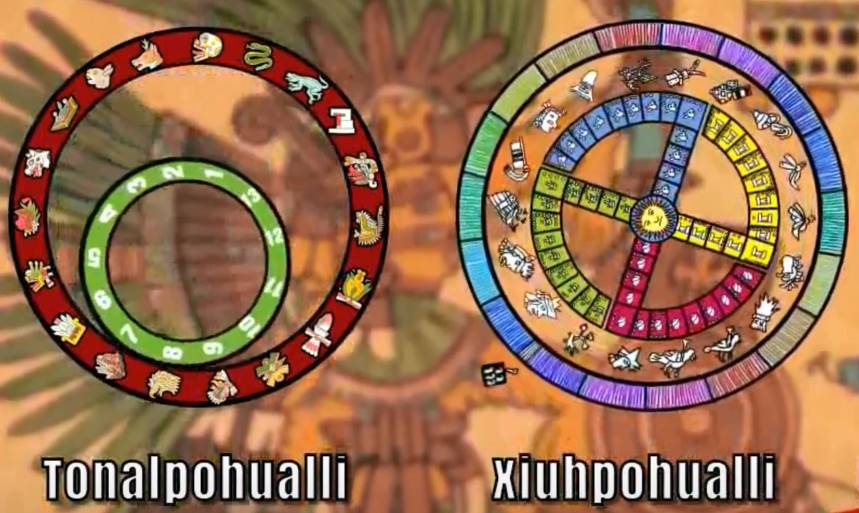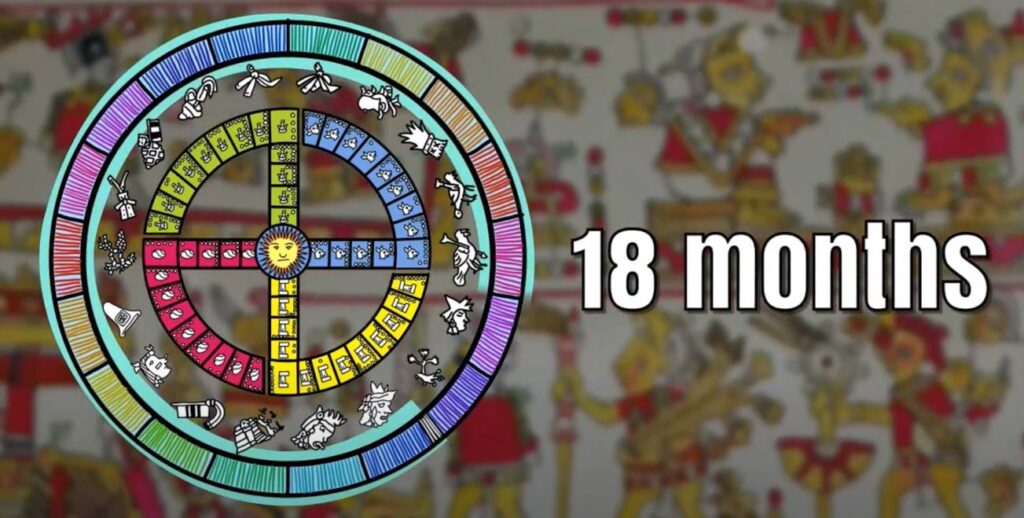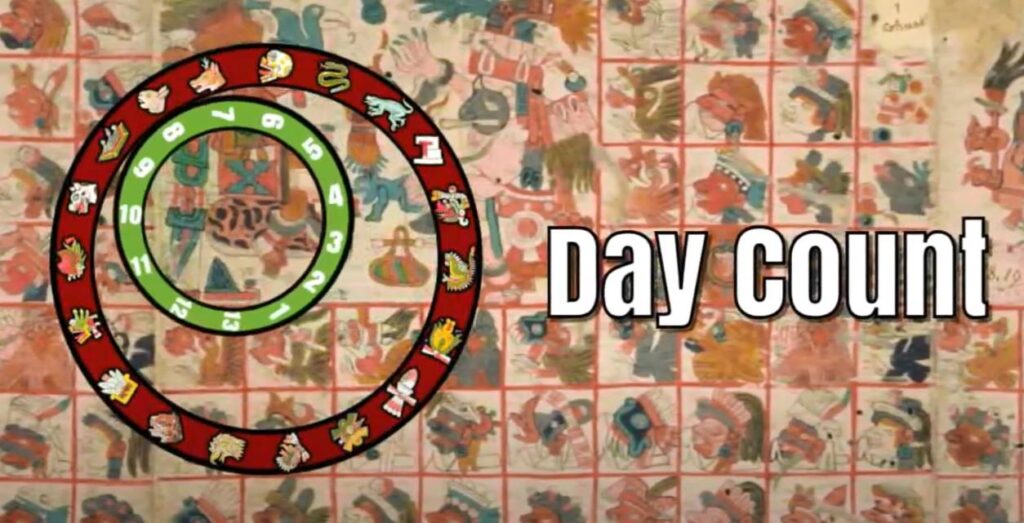The Xiuhpohualli: Into the Aztec Calendar
The pre-Columbian peoples of central Mexico used the Xiuhpohualli, an ancient Aztec calendar. This 365-day system combines ritual and agricultural elements that governed the daily life of the Aztecs. Below, we will explain its structure, its months and symbols, and its relationship to the Tonalpohualli, another sacred calendar.
Simple Diagram of the Aztec Calendar

The Aztec calendar is based on two main systems:
Xiuhpohualli:
(Year Count): A 365-day solar calendar with a focus on agriculture.
Tonalpohualli:
(Count of days): A sacred cycle of 260 days used in religious ceremonies.
The two calendars interact to form a larger 52-year cycle known as the ‘Calendar Wheel’. When they synchronized the two cycles, they celebrated a great ritual of renewal.
How Many Months and Calendars Did the Aztecs Have?
I. Xiuhpohualli (18 Months and Days, Nemontemi)

The Aztec divided the Xiuhpohualli into 18 months of 20 days each, called metztli, for a total of 360 days. They added 5 additional days, known as Nemontemi, considered unlucky days.

Metztli means ‘month’ in Nahuatl. Each month had 20 days and its own spiritual and agricultural significance. For example, people dedicated some months to planting, while others focused on religious festivals and offerings to the gods.

II. Tonalpohualli (260 Day Cycle and the Trecenas)

On the other hand, the Tonalpohualli was a 260-day cycle composed of 20 13-day periods, called trecenas. Each trecena was associated with a deity that influenced destiny. Thus, the Aztecs operated two parallel systems to guide their agricultural and spiritual activities.

1— Cipactli (Crocodile)
2— Ehecatl (Wind)
3— Calli (House)
4— Cuetzpalin (Lizard)
5— Coatl (Snake)
6— Miquiztli (Death)
7— Mazatl (Deer)
8— Tochtli (Rabbit)
9— Atl (Water)
10— Itzcuintli (Dog)
11— Ozomatli (Monkey)
12— Malinalli (Grass)
13— Acatl (Reed)
1— Ocelotl (Jaguar)
2— Cuauhtli (Eagle)
3— Cozcacuauhtli (Vulture)
4— Ollin (Movement)
5— Tecpatl (Flint)
6— Quiahuitl (Rain)
7— Xochitl (Flower)
Aztec Calendar Symbols:

The Aztec calendar is full of complex symbols representing religious, cosmic and natural concepts. I’ll explain their main rings below.
First Ring (Centre):
It contains the figure of Tonatiuh, the Sun God, surrounded by four squares representing the ‘Soles’ or previous eras of creation.
Second Ring:
It includes the 20 named days of the Xiuhpohualli, also used to name the years. Each year began with one of four specific calendar days.
Third Ring:
It depicts ritual ornaments such as sun rays, blood symbols and precious stones such as chalchihuite.
Outer Ring:
It shows sprouting herbs, writing scrolls, flames, and parts of the fire serpent Xiucoatl, associated with renewal and rebirth.
The Xiuhpohualli was not just a system of dates, but a sacred tool that connected the Aztecs with the cosmos and their gods. Its complexity and symbolism reflect a deep understanding of nature and spirituality. This calendar is a priceless legacy of Aztec civilisation that continues to fascinate historians and scholars in the modern world.
FAQs
Sources consulted:



